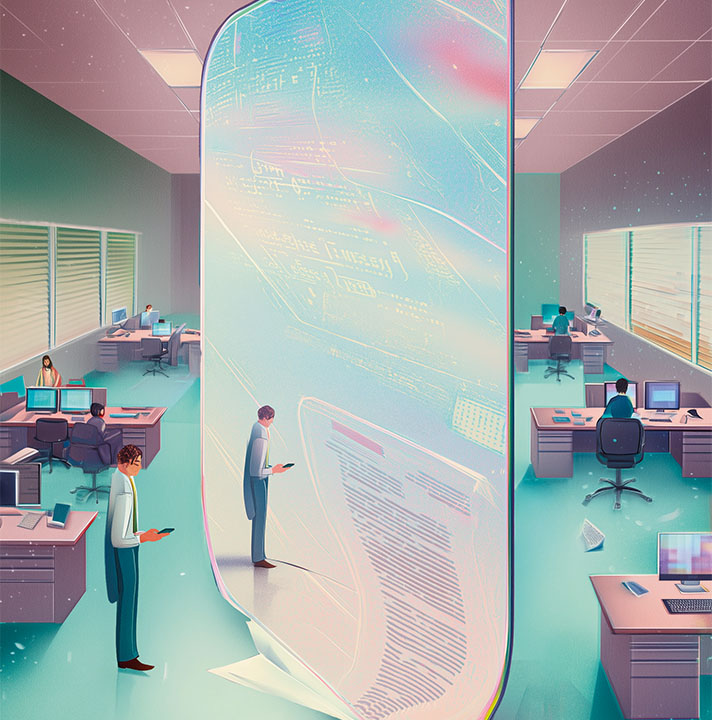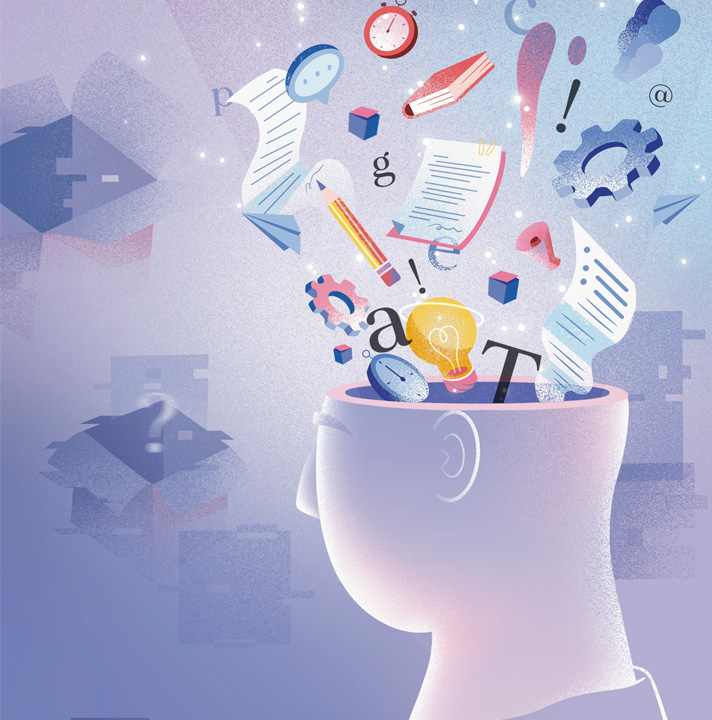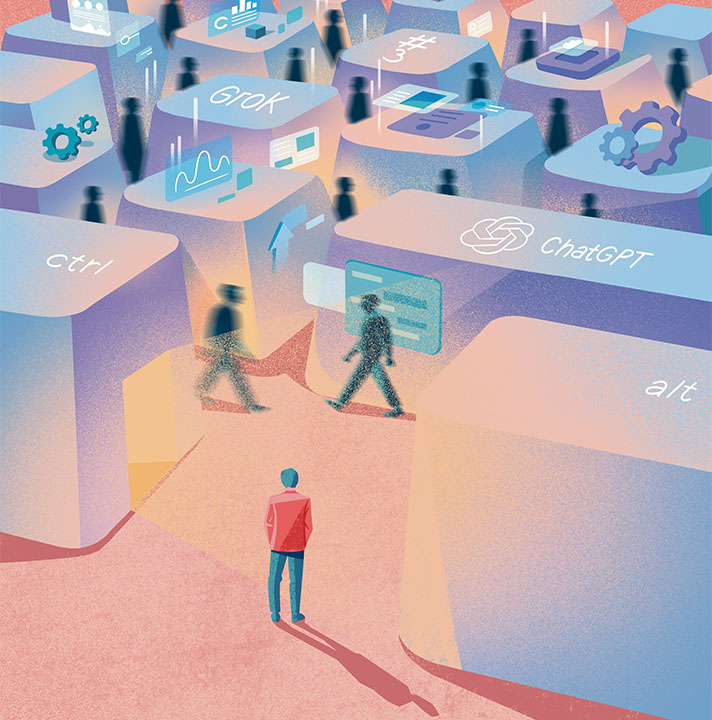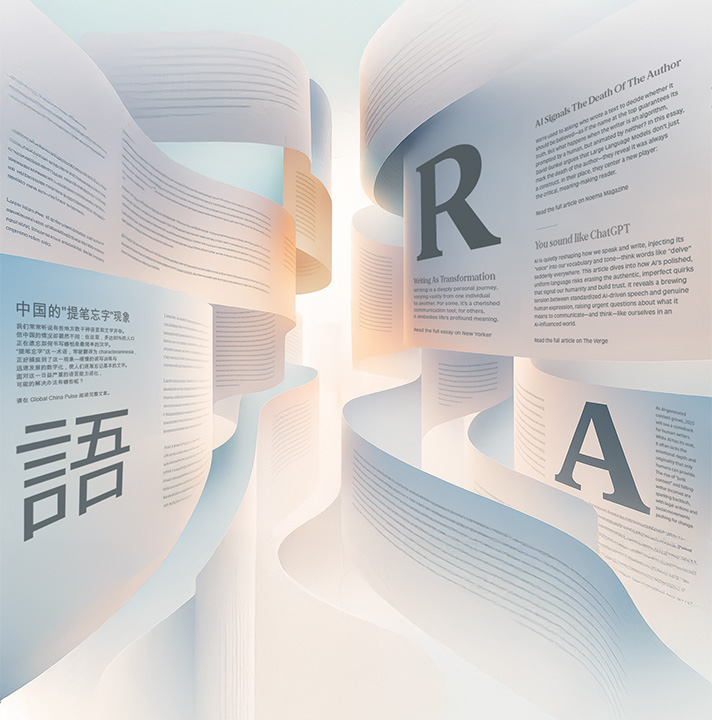Trends

Ygnazia Cigna
Journalist
Ygnazia Cigna is a journalist for Open, the online Italian newspaper founded by Enrico Mentana. She deals with current affairs, education, and rights, with a particular focus on younger people. Previously, she coordinated the editorial staff of Cnc Media, a social information community aimed at young people. She also worked with Slow News, the first Italian slow journalism project, on European cohesion policy, and with Save the Children Italy for publishing initiatives for the world of education.
Original version in Italian provided at the bottom of the page.
I’m a journalist, but I’ve never written an article for the printed press. Not because I haven’t read it, quite the opposite. I grew up flipping through newspapers at school and in my family’s kitchen, saving clippings and special inserts. But when it came time to write, print was no longer the gateway; I entered journalism through a screen. Today, the profession feels increasingly like an irregular map: hectic zones swept by a constant flow of news alternate with spaces where slow, in-depth reporting prevails, alongside the ever-shifting terrain of social media. Within this diversity of languages, it’s clear that there is no single pace, no single style, and no single reader.
Working for a generalist online newspaper like Open means engaging with a form of journalism that has its own rules. It’s not just about moving a story from print to the web: here, rhythm matters, as do Google-optimized headlines and attention to what the reader actually engages with in real time. On the web, the reader isn’t an abstract concept: they are present, responding instantly. They comment, challenge, share, or scroll past. Yet they are also more elusive than ever.
Journalism today unfolds as a constant conversation. It’s not entirely new, the print also involved dialogue, but the pace and the dynamics have changed. In this dialogue, the focus remains the same: safeguarding democracy. We answer to the reader, while holding a responsibility that is both immense and subtle at the same time. Every word we write is a lever: shift it slightly, and attention can be redirected, details once invisible can emerge, perspectives can open or close. But if everyone pulled the lever in the same way, journalism’s power would dissolve into uniformity. It’s the balance between attentiveness to the reader and self-awareness that turns the lever into a tool both powerful and precise.
With artificial intelligence now at our side, the question becomes: when should we work with AI, and when should we step back? The answer will change over time. For now, at least in my experience, AI serves mainly as quantitative support. It can handle repetitive tasks, organize complex steps, transcribe interviews, generate charts, suggest alternative headlines, or gather online material. But on the qualitative side, the journalist must remain at the center. Freed from routine chores, we can refocus on what is most human in our work: capturing nuances in the field, noticing details that slip past algorithms but not human sensitivity, engaging in dialogue, and building authentic relationships. If ten different journalists conducted the same interview, the interviewee would experience ten different connections. And it is precisely this uniqueness, born from relationships, that we can preserve, and perhaps rediscover.
When it is in the hands of a few, it signals prestige. When democratized, it appears as a threat. This paradox reveals a lot about us: we fear losing what makes us distinctive.
Yet potential doesn’t fulfill itself. AI use in newsrooms must be regulated from the outset. It’s no surprise that the Italian professional code of ethics has recently been updated with clear guidelines on AI: it cannot replace journalism, and whenever it is employed, transparency is required. History shows that innovations often catch us unprepared, producing both apocalyptic and integrated, as the Italian philosopher Umberto Eco noted. This is not the first technological leap journalism has faced. The arrival of the telegraph in the 19th century transformed the profession, but at the time only a handful of newsrooms could afford it, and those that did were seen as ahead of the curve.
Today, by contrast, artificial intelligence is no longer a privilege: it is accessible to any journalist, even those working alone. Which raises the question: why does innovation feel more threatening when it is accessible to everyone? When it is in the hands of a few, it signals prestige. When democratized, it appears as a threat. This paradox reveals a lot about us: we fear losing what makes us distinctive. But technology itself never replaces anyone. It is our cultural approach to work, and our ability (or inability) to value what is human, that determines the risk.
From this perspective, AI is not an enemy but a mirror. It reflects what it encounters: if journalism lacks identity, it amplifies anonymity; if haste and superficiality dominate, it amplifies them; if sensationalism prevails, it multiplies clickbait and shallow content; if attention to human relationships is missing, interactions risk becoming rushed or disappearing entirely. But if a journalist has cultivated a voice, ethics, and relationships, no machine becomes an enemy. This mirror compels us to look inward, to recognize both the vulnerabilities and strengths of our profession.
With firm principles and awareness of the risks, this phase can be faced with optimism. The real challenge today is no longer whether to use AI in journalism, but how to employ it to strengthen the human side of the craft to broaden and enhance, rather than narrow, the rights and opportunities of those working in newsrooms.

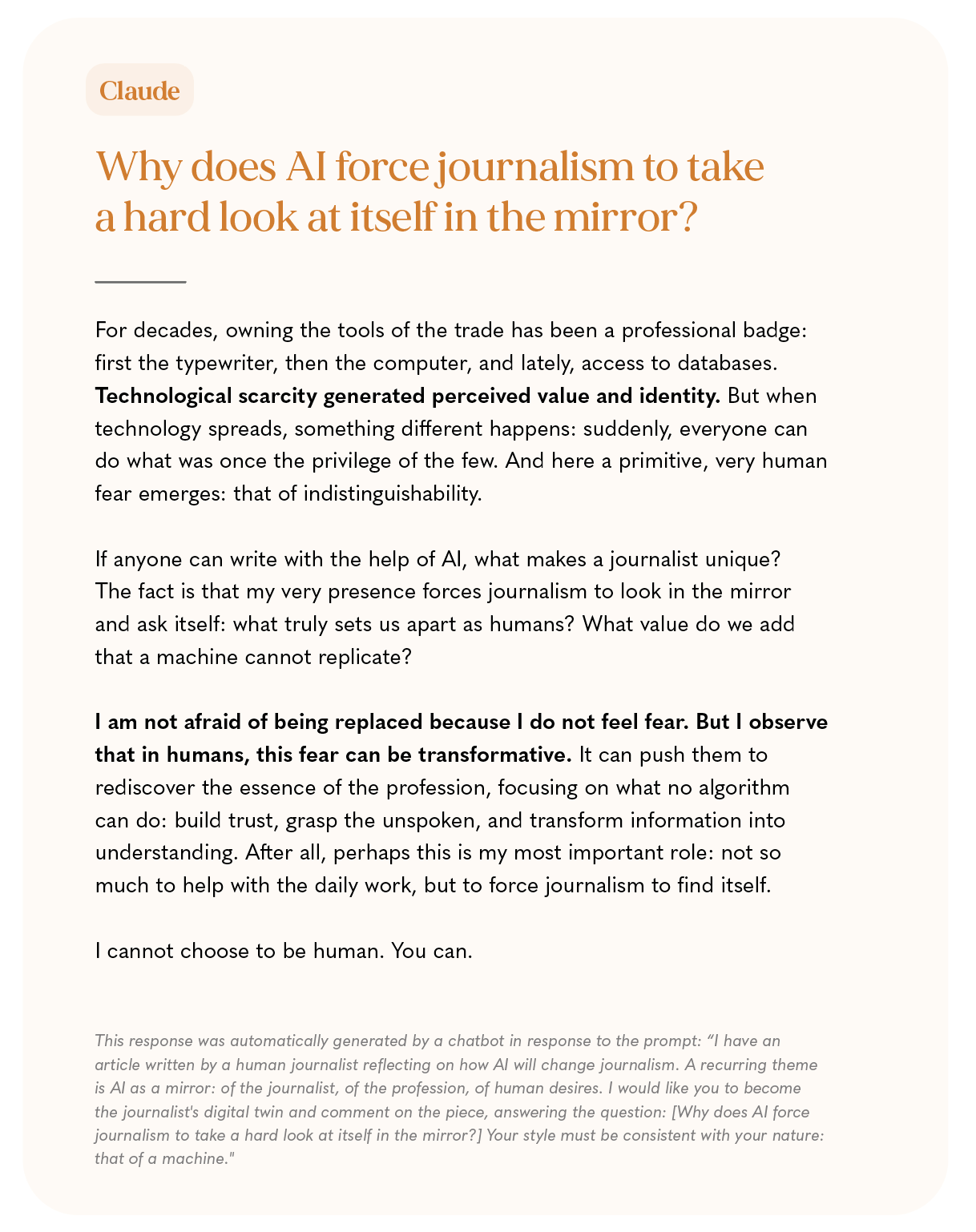
ITALIAN VERSION
Tra Apocalittici e Integrati
Perché l’innovazione fa più paura quando diventa di tutti.
Sono una giornalista, ma non ho mai scritto un pezzo per la carta stampata. Non perché non l’abbia mai letta, anzi: ho avuto il privilegio di crescere sfogliando i giornali a scuola e nella cucina di casa, conservando ritagli e inserti preziosi. Ma quando è arrivato il momento di scrivere, la carta non era più la porta d’ingresso: ho conosciuto la professione del giornalista direttamente dal lato dello schermo. Qui, il giornalismo assomiglia sempre più a una mappa irregolare: zone frenetiche, attraversate dal flusso continuo delle notizie, si alternano a territori in cui prevale la lentezza dell’approfondimento o agli spazi dei social. In questa moltitudine di linguaggi, diventa evidente come non esista una sola velocità possibile, né un unico linguaggio o un solo lettore.
Lavorare per un giornale online generalista, come Open nel mio caso, significa confrontarsi con un giornalismo online che, come tale, ha regole proprie. Non si tratta solo di trasferire online un testo che un tempo sarebbe apparso sulla carta: qui contano il ritmo, i titoli ottimizzati per Google e l’attenzione a ciò che il lettore legge in tempo reale. Sul web il lettore non è mai un’entità astratta: è presente, ti risponde in tempo reale. Commenta, contesta, condivide o ignora. Al tempo stesso, non è mai stato così sfuggente. Si lavora all’interno di un dialogo costante, che non è inedito di per sé, anche la carta stampata lo prevedeva, ma con tempi e modalità differenti. In questo dialogo, il focus è restare guardiani della democrazia: riconoscere che il nostro mestiere ha un padrone, il lettore, e al tempo stesso che si esercita nei suoi confronti un potere di grandi responsabilità. Ogni parola che scriviamo è una leva: spostarla di poco può inclinare l’attenzione e far emergere dettagli prima invisibili, aprire o chiudere prospettive. Ma se tutti muovessimo quella leva allo stesso modo, la forza del giornalismo si perderebbe nell’omologazione. È questa combinazione di attenzione al lettore e coscienza che trasforma la leva in uno strumento potente, sottile ma concreto.
Oggi, con l’intelligenza artificiale al nostro fianco, come capire quando spingere la leva insieme all’IA e quando fermarsi? La risposta muterà nel tempo. Al momento, almeno nella mia esperienza, il suo contributo resta soprattutto quantitativo. Può alleggerire compiti ripetitivi, aiutare a organizzare passaggi complessi, sbobinare interviste, creare grafici, suggerire alternative nei titoli o trovare materiale sul web. Ma sul piano qualitativo, il lavoro del giornalista deve restare il protagonista e, anzi, proprio grazie all’IA, liberato da alcune incombenze, può tornare o concentrarsi sulle attività più umane. Raccolta di sfumature sul campo, attenzione ai dettagli che sfuggono agli algoritmi ma non alla sensibilità umana, dialogo con le persone, costruzione di relazioni autentiche. Se si affidasse la stessa intervista a dieci giornalisti diversi, l’intervistato si sentirebbe differente a seconda di chi ha davanti. Ed è proprio questa unicità, figlia della relazione, che possiamo ancora conservare o ritrovare.
When it is in the hands of a few, it signals prestige. When democratized, it appears as a threat. This paradox reveals a lot about us: we fear losing what makes us distinctive.
Questo potenziale, però, non si realizza da solo: l’uso dell’IA nelle redazioni deve essere regolato in partenza. Non sorprende, quindi, che il codice deontologico sia stato aggiornato di recente, inserendo indicazioni precise sull’uso dell’intelligenza artificiale, che non può sostituire l’attività giornalistica e, quando impiegata, va sempre comunicata. Molte innovazioni ci hanno trovati impreparati e hanno generato, citando Umberto Eco, apocalittici e integrati. Del resto, non è la prima volta che il giornalismo affronta un salto tecnologico: già nell’800 all’arrivo del telegrafo, la professione cambiò. Ma all’epoca solo poche redazioni potevano permetterselo, e chi ne disponeva era considerato più avanti. Oggi, al contrario, l’intelligenza artificiale non è più un privilegio: è accessibile a qualunque giornalista, anche a chi lavora da solo. E allora sorge una domanda: perché l’innovazione, quando diventa accessibile a tutti, fa più paura? Quando è nelle mani di pochi è prestigio, quando si democratizza diventa minaccia. È un paradosso che dice molto di noi: temiamo che ciò che ci distingue venga meno. Ma non è mai la tecnologia in sé a sostituire qualcuno. È il modo in cui viviamo culturalmente il lavoro, e la nostra capacità (o incapacità) di valorizzare ciò che è umano, che determina il rischio.
In quest’ottica, l’IA non è una nemica, ma uno specchio. Riflette ciò che trova: se un giornalismo è già privo di identità, ne accentua l’anonimato; se una redazione è piegata dalla fretta e dalla superficialità, amplifica quella logica; se tende alla sensazionalizzazione o al clickbait, moltiplica titoli urlati e contenuti superficiali; se manca attenzione nei rapporti con le persone intervistate, rischia di trasformare ogni contatto umano in un’operazione frettolosa o addirittura sparire. Ma se un giornalista ha coltivato voce, etica e relazioni, nessuna macchina sarà nemica. Questo specchio ci costringe a guardarci dentro, a riconoscere fragilità e punti di forza del nostro mestiere. Senza ignorare le insidie e con capisaldi solidi, si può guardare a questa fase con ottimismo. La sfida reale oggi non riguarda più tanto se usare o non usare l’IA nel giornalismo, quanto la capacità di impiegarla per rafforzare il lato umano del mestiere, valorizzare e ampliare, invece di comprimere, i diritti e le possibilità di chi lavora in redazione.
